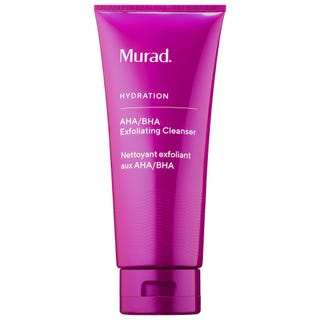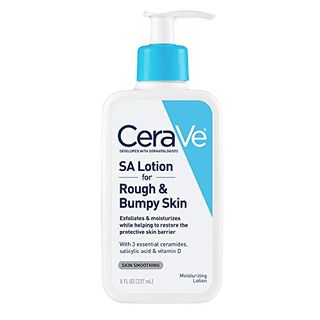How to Use the Ordinary Lactic Acid Peel
Whether it's a silky serum or luxurious cream, there are endless anti-aging products vying for your attention. From retinol to vitamin C to peptides, the ingredients make all the difference and there are plenty to choose from. But recently, you may have noticed another one fighting for shelf space: lactic acid.
Lactic acid is an alpha hydroxy acid (AHA), a class of chemicals that gently exfoliate the skin, which also includes glycolic, citric, tartaric, mandelic, and malic acids.
But while it's popping up in more products, lactic acid is not exactly new and has a unique history. "The ingredient was first isolated from sour milk, and it is thought that Cleopatra took advantage of its beneficial properties on the skin by bathing in milk," says S. Tyler Hollmig, M.D., director of dermatologic surgery at UT Dell Medical School and Ascension Seton in Austin.
Nowadays, lactic acid comes from a variety of sources, including vegan ones, that are typically synthetic and easier to formulate a complete product with. Compared to its ultra-potent cousin, glycolic acid, lactic acid is milder (thanks to its slightly larger molecule size) while delivering similar results, meaning it may be more suitable for those who have easily irritated skin, Dr. Hollmig says. Intrigued? Read on to find out what lactic acid can do for your skin.
What are the skincare benefits of lactic acid?
It's a top-notch exfoliator.
Lactic acid works by gently exfoliating the outer layer of your skin, explains Dr. Hollmig. Sloughing off the dull, dead cells makes way for the brighter, smoother complexion underneath, research shows.
It may be helpful in reducing acne.
This exfoliation also helps keep pores clear by sloughing away dead skin cells plus excess oil, preventing pesky pimples, blackheads, or whiteheads from forming.
It can help smooth fine lines and wrinkles.
Often, aging skin can especially use some help in the exfoliation department. "Normal, healthy skin cells in the outer layer of the skin shed every two to three weeks. This may slow down due to aging, dehydration, and other environmental stressors, which can appear as rough, scaly, and dull-appearing skin," Dr. Hollmig says.
In addition to revving up your radiance, lactic acid can boost plumpness. Past research shows that a 5% lactic acid formula applied twice a day improved skin thickness and firmness, says Dr. Hollmig, which translates into smoothing out fine lines and wrinkles. This older, but often-cited study showed that a greater concentration of 12% resulted in even more visible benefits, but he cautions that more potent products may make you more prone to irritation (like redness, itching, or peeling), particularly for sensitive complexions.
It can treat bumpy skin.
Beyond the face, lactic acid is often incorporated into body lotions. Most notably, it's used to treat keratosis pilaris, a.k.a. "chicken bumps" that appear on the backs of your arms or on the legs. The skin condition is harmless, but is often bothersome. Lactic acid can take care of these little bumps, says Dr. Hollmig, but you have to apply the lotion regularly long-term for best results.
Are there any negative side effects of using lactic acid on your skin?
Lactic acid is known to be gentler and more hydrating compared to other AHAs. For that reason, it may be suitable even if you have sensitive skin, says Dr. Hollmig. That said, if you find that the ingredient makes you red and irritated, consider using a product with a lower percentage of lactic acid or skipping it entirely.
Important note: Since all AHAs can make your skin more sensitive to the sun, always apply sunscreen before you head outdoors, whether you applied lactic acid that morning or the night before.
If you're pregnant, lactic acid is a safe option, says Dr. Hollmig. Your dermatologist and OB/GYN will likely suggest skipping popular anti-aging ingredients, like retinoids, so lactic acid can be a good substitute during this time.
How to add lactic acid to your skincare routine
✔️ Start slow: Always follow the product's instructions, but it's better to start slowly with acids and build up a tolerance. When in doubt, use a lower-concentration product (around 5%) a couple of times per week, working your way up to every other day depending on your skin's response.
✔️ Test it out: Before you use a lactic acid product, do a patch test on the inner portion of your elbow or just below your chin to see if you have any type of reaction. If you experience any extreme irritation, discontinue use or consult your dermatologist for next steps.
✔️ Find your hero product: Lactic acid can be found in a wide variety of skincare products, including the following:
- Cleansers: Great for acne-prone skin, a face wash containing lactic acid is a great way to reap the benefits of the ingredient without too much time on your skin, reducing the potential for irritation. Be sure to avoid the areas around your eyes.
- Creams or lotions: Creams and lotions are a great way to introduce lactic acid into your routine because they're often formulated with moisturizing ingredients like ceramides and hyaluronic acid, mitigating potential dryness.
- Serums: Serums typically deliver a more potent shot of active ingredients to the skin. It's best to use these at night after cleansing and before moisturizing.
- Masks: These products are designed to give a quick hit of exfoliation, meaning the concentration of lactic acid and other potent ingredients may be higher. In general, experts recommend using a mask like this once per week or as needed.

CLEANSER
AHA/BHA Exfoliating Cleanser
Combines salicylic, lactic, and glycolic acids

SERUM
Lactic Acid 10% + HA
The Ordinary sephora.com
$6.80
Combines lactic and hyaluronic acids

LOTION
SA Lotion for Rough & Bumpy Skin
Combines salicylic and lactic acids

FACE MASK
Glycol Lactic Radiance Renewal Mask
REN Clean Skincare sephora.com
$58.00
Combines glycolic and lactic acids
✔️ Avoid mixing: Unless a product is specifically formulated with multiple acids (like the ones mentioned above), avoid pairing your lactic acid product with another product that contains AHAs, BHAs, or retinol at the same time of application to avoid excessive dryness.
✔️ Don't forget sunscreen: Again, always use SPF in the morning if you use a lactic acid product the night before. This can help protect the new, healthy skin from UV damage. (Check out our favorite face sunscreens for every skin type.)
Support from readers like you helps us do our best work. Go here to subscribe to Prevention and get 12 FREE gifts. And sign up for our FREE newsletter here for daily health, nutrition, and fitness advice.
Jessica Migala Jessica Migala is a health writer specializing in general wellness, fitness, nutrition, and skincare, with work published in Women's Health, Glamour, Health, Men's Health, and more.
This content is created and maintained by a third party, and imported onto this page to help users provide their email addresses. You may be able to find more information about this and similar content at piano.io
How to Use the Ordinary Lactic Acid Peel
Source: https://www.prevention.com/beauty/skin-care/a32743734/what-is-lactic-acid/